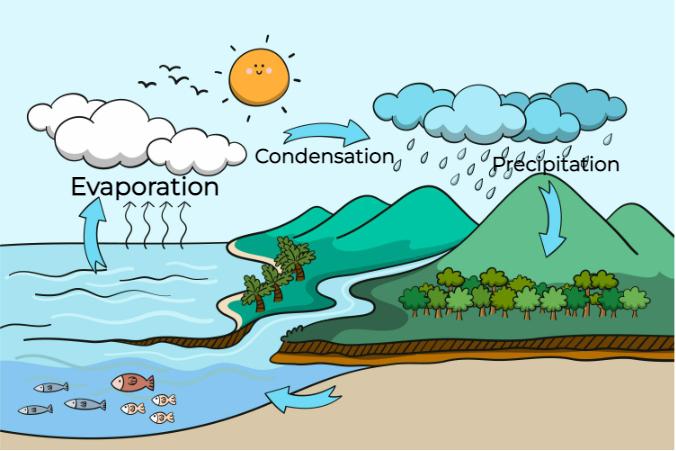
Water is constantly moving through a cycle of evaporation, condensation, and precipitation. This continuous process is essential for life on Earth, regulating our climate and providing freshwater sources. One key aspect of this cycle is evaporation, the transformation of liquid water into water vapor. While we often associate evaporation with sunny days, it’s important to understand that does water evaporate at night as well, albeit at a slower rate.
This article delves into the intricacies of water evaporation, exploring how it occurs both during the day and at night. We’ll examine the factors influencing evaporation rates and shed light on the continuous nature of this vital process.
Water Evaporation Process
Evaporation is a physical change where liquid water molecules gain enough energy to break free from their bonds and transition into the gaseous state, known as water vapor. This occurs when individual water molecules at the surface of a body of water absorb heat energy from their surroundings. As these molecules become energized, they move faster and eventually possess enough kinetic energy to escape the liquid phase and enter the atmosphere.
The rate of evaporation depends on several factors, including temperature, humidity, wind speed, and the surface area of the water exposed to the air. Warmer temperatures increase the kinetic energy of water molecules, leading to faster evaporation. Similarly, lower humidity allows for a greater difference in vapor pressure between the water surface and the surrounding air, promoting evaporation.
Daytime Evaporation
During the day, the sun’s radiant energy heats the Earth’s surface, including bodies of water like lakes, rivers, and oceans. This solar radiation provides the primary source of heat energy driving daytime evaporation. As the water absorbs heat, its temperature rises, increasing the kinetic energy of its molecules.
The warmer air above the water surface is less dense than the cooler air below, creating a convection current that draws in fresh air and carries away evaporated water vapor. This continuous flow of air further enhances evaporation by removing the humid air near the water surface, allowing for more rapid absorption of heat and subsequent evaporation.
Nighttime Evaporation
While nighttime temperatures are generally lower than daytime temperatures, does water evaporate at night? The answer is yes, but at a slower rate. Even without direct sunlight, some heat energy remains in the environment from the day’s warmth. This residual heat continues to warm the water surface, albeit at a reduced pace.
Furthermore, nighttime cooling can lead to a temperature difference between the air near the ground and the higher atmosphere. This creates a stable layer of air near the surface, which can trap moisture and reduce evaporation. However, if there is sufficient wind or air movement, it can carry away the humid air near the water surface, allowing for some nighttime evaporation.
Factors Affecting Evaporation Rate
Several factors influence the rate at which does water evaporate at night and during the day:
Temperature
Higher temperatures increase the kinetic energy of water molecules, leading to faster evaporation. Conversely, lower temperatures slow down the evaporation process.
Humidity
High humidity levels mean the air is already saturated with moisture, reducing the difference in vapor pressure between the water surface and the atmosphere. This inhibits evaporation as there is less “room” for additional water vapor in the air.
Wind Speed
Wind carries away humid air near the water surface, replacing it with drier air. This continuous flow of fresh air promotes faster evaporation rates.
Surface Area
A larger surface area exposed to the air allows for more water molecules to come into contact with the atmosphere, increasing the potential for evaporation.
Conclusion
Water evaporation is a continuous process that occurs both day and night, albeit at varying rates depending on environmental factors. While daytime evaporation is driven primarily by solar radiation, nighttime evaporation persists due to residual heat and wind-driven air movement. Understanding the factors influencing evaporation rates helps us appreciate the complex interplay between water, energy, and the atmosphere in shaping our planet’s climate and supporting life.
